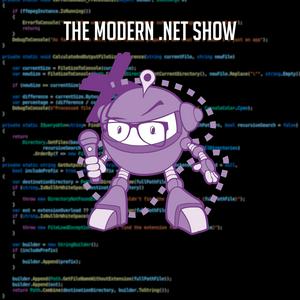.NET Aspire: How Maddy Montaquila and the .NET Team Are Revolutionizing Development
RJJ Software's Software Development Service This episode of The Modern .NET Show is supported, in part, by RJJ Software's Software Development Services, whether your company is looking to elevate its UK operations or reshape its US strategy, we can provide tailored solutions that exceed expectations. Show Notes "If your app has a backend, it's Aspire-able. And so it's tools, templates, and packages for really any type of app… So just being able to walk up to a repo, clone it, and hit F5. When was the last time we were able to do that? Like, ten years ago, maybe?"— Maddy Montaquila Welcome friends to The Modern .NET Show; the premier .NET podcast, focusing entirely on the knowledge, tools, and frameworks that all .NET developers should have in their toolbox. We are the go-to podcast for .NET developers worldwide, and I am your host: Jamie “GaProgMan” Taylor. In this episode, we talk with Maddy Montaquila about .NET Aspire, what it is, how it's not just for .NET developers, and how it can help you to run a repo by simply hitting F5, regardless of what's in there. "To me, it really is just a dev tool in a bunch of different ways. It makes you just hit F5 again, no matter how many containers, or local, or deployed services you have to deal with, or projects, or languages, or if you're in VS, or VS Code, or on a Mac, or on a command line, or on a Linux machine. Like Aspire just makes all that magical without replatforming"— Maddy Montaquila Along the way, we also talk about the importance of reducing the complexity of going from, "I have an idea," to, "my app is running in the cloud." And Maddy drops a wonderful metaphor for .NET Aspire using a Logo-based metaphor. And we address the community invented elephant in the room: that .NET Aspire, somehow, locks you into using one vendor. Spoiler alert: it can deploy to any cloud vendor, and even to on-prem servers. Anyway, without further ado, let's sit back, open up a terminal, type in `dotnet new podcast` and we'll dive into the core of Modern .NET. Supporting the Show If you find this episode useful in any way, please consider supporting the show by either leaving a review (check our review page for ways to do that), sharing the episode with a friend or colleague, buying the host a coffee, or considering becoming a Patron of the show. Full Show Notes The full show notes, including links to some of the things we discussed and a full transcription of this episode, can be found at: https://dotnetcore.show/season-7/net-aspire-how-maddy-montaquila-and-the-net-team-are-revolutionizing-development/ Maddy's Links: Maddy on Bluesky Other Links: CNCF OpenTelemetry Helm Codespaces Podman Devcontainers Vim GDB FreeBSD Jail .NET Aspire Community Toolkit CORS MCP Phi-4 Four stages of competence dot.net Cloud features of .NET Customer Stories: customers.microsoft.com dot.net/customers Ollama Supporting the show: Leave a rating or review Buy the show a coffee Become a patron Getting in Touch: Via the contact page Joining the Discord Remember to rate and review the show on Apple Podcasts, Podchaser, or wherever you find your podcasts, this will help the show's audience grow. Or you can just share the show with a friend. And don't forget to reach out via our Contact page. We're very interested in your opinion of the show, so please get in touch. You can support the show by making a monthly donation on the show's Patreon page at: https://www.patreon.com/TheDotNetCorePodcast. Music created by Mono Memory Music, licensed to RJJ Software for use in The Modern .NET Show
